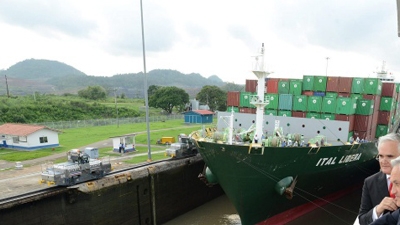For decades, Latin America viewed Asia with envy. The role and influence of the Asian tigers and now China on the world economy have been the subject of praise, discussion and speculation on which the wheel of global growth turns.
But since then, the Latin American region has done its homework – and now has an advantage over the Asian “teacher” in many aspects of development, such as the increase in per capita income and the reduction in poverty and inequality, although the swiftness of Asian growth remains an enviable goal.
Did Latin America finally learn how to play in the big leagues of the world economy from Asia? What lessons could region’s countries now share with their Asian counterparts in terms of expanding the middle class and reducing inequality?
These were some of the key themes of a panel discussion of experts from Asia and Latin America. The experts concluded that, despite significant differences and a vast ocean between them, the two regions tend to converge and have become increasingly similar. A few statistics:
- In 1980, per capita income in East Asia was less than US$ 1,000 whereas in Latin America it was nearly US$ 8,000. By 2010, that figure was US$ 7,700 for Asians and US$ 9,700 for Latin Americans.
- Although inequality in Latin America is one of the highest in the world, it has been declining since 2001. The unprecedented increase in the middle class (over the past decade, 70 million Latin Americans have escaped poverty) led to the decline in inequality. Asia presents a mixed scenario, where China has growing inequality despite record growth in recent years.
- Whereas East Asia has enjoyed enormous success in reducing extreme poverty – from 77% in 1981 to 12% in 2010-, in Latin America, this rate was initially much lower and fell even more, to just 5% in 2010. The two regions have begun to converge in this area.
- Asia has a systematic surplus in the current account, which has been shrinking. In Latin America, the surplus has now surpassed the deficit.
According to experts, the successes and missteps of the two regions in recent years are explained by the external-demand driven economies in Asia– their exports are strong and diversified – and by economies that concentrate on stimulating domestic consumption and the sale of basic commodities in Latin America.
“The more Asia connects with the world, the more the world connects with it,” said Augusto de la Torre, World Bank Chief Economist for Latin America and the Caribbean, who added that a major shortcoming of the region, unlike in Asia, is the inadequate capacity for savings, the limited competitiveness of national currencies and especially, the low level of innovation.
Santiago Levy, Vice-President for Sectors and Knowledge at the Inter-American Development Bank, agreed that innovation generated by an improvement in education could definitely mark the difference between the two regions in the future.
China effect
With respect to the potential impact on both regions, experts are more concerned about China’s slower growth than on the U.S. Federal Reserve’s changes to monetary policy. Currently, China is a major consumer of basic commodities exported from Latin America, from Argentine soy to Peruvian metals. The World Bank estimates that this year, the Asian giant will have a GDP growth rate below 7%, a figure that some experts consider optimistic.
“International commodity prices affect the region, not only in terms of reserves, but also with respect to exchange policy and inflation. We must carefully work together to deal with this situation. As a region, we are attempting to diversify and increase inter-regional trade with value–added goods,” explained Bolivia’s Planning Minister, Viviana Caro.
Malaysia’s Central Bank Director, Zeti Akhtar Aziz, is the first woman to hold that position in Asia. She knows what is coming: a transitional period of increased volatility in financial and foreign currency markets. The countries of the two regions must be prepared to manage that volatility, without affecting the supply of credit to ensure the possibility of growth.
Although most Latin American countries are better prepared to deal with volatility, perspectives are not encouraging. According to several forecasts, the region will grow just 2.3% this year, less than in 2013 and far below the rates of 5% and 6 % the region enjoyed in the first decade of this century.
According to De La Torre, “in order to escape the middle-income country trap, both regions must make significant efforts to strengthen the potential for knowledge innovation.” This view was supported by Barry Eichengreen, professor of economics and political science at the University of California, Berkeley, who said that there is no “universal solution for escaping poverty.”
“Education, especially higher education, is essential for minimizing the effect of the approaching slowdown; the focus should be on high-technology exports,” he said.

